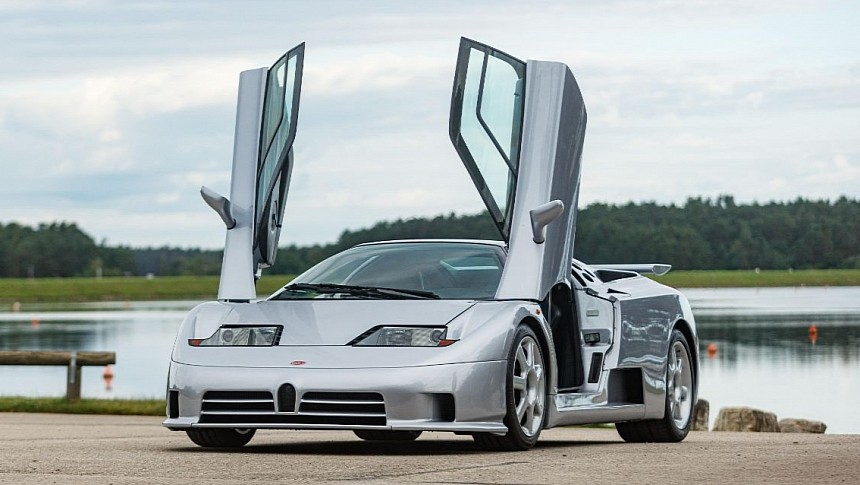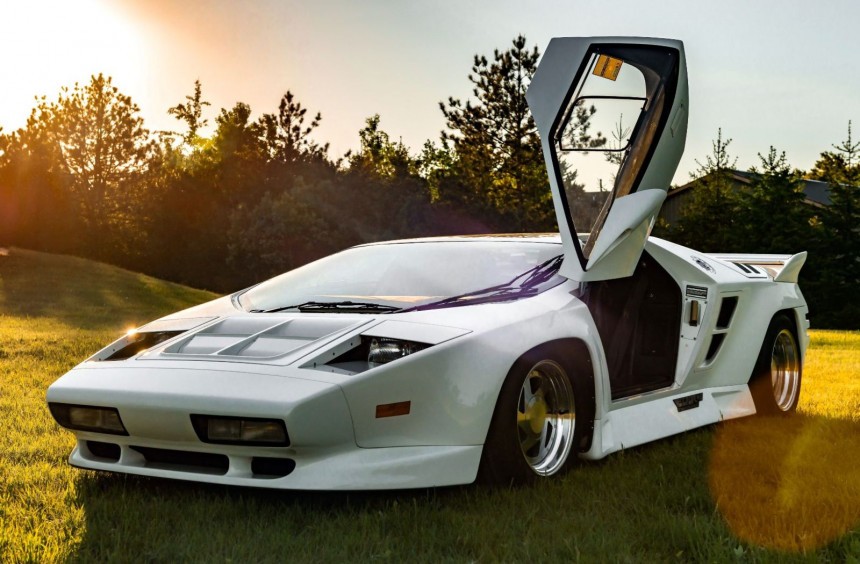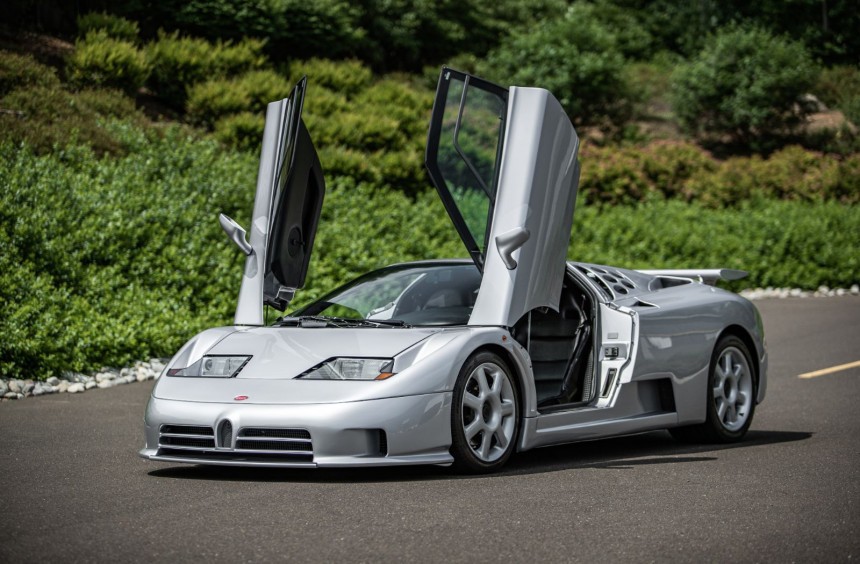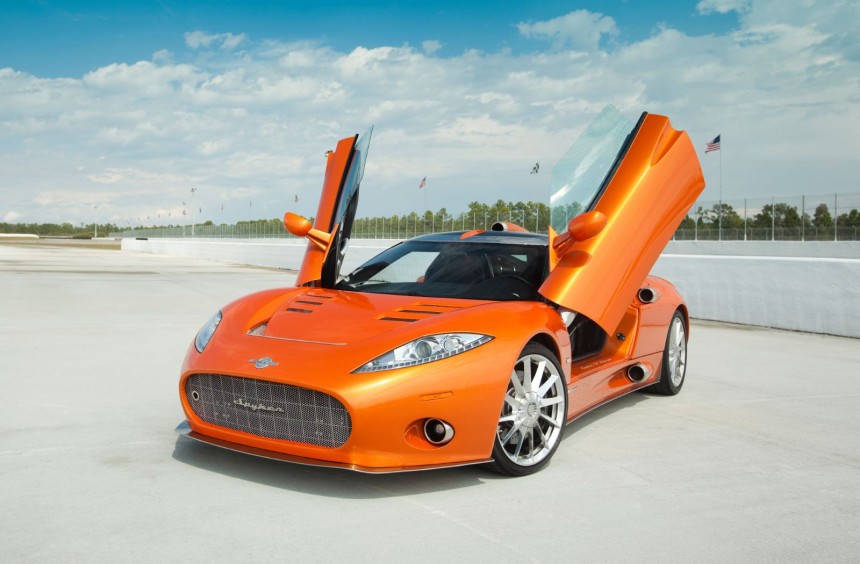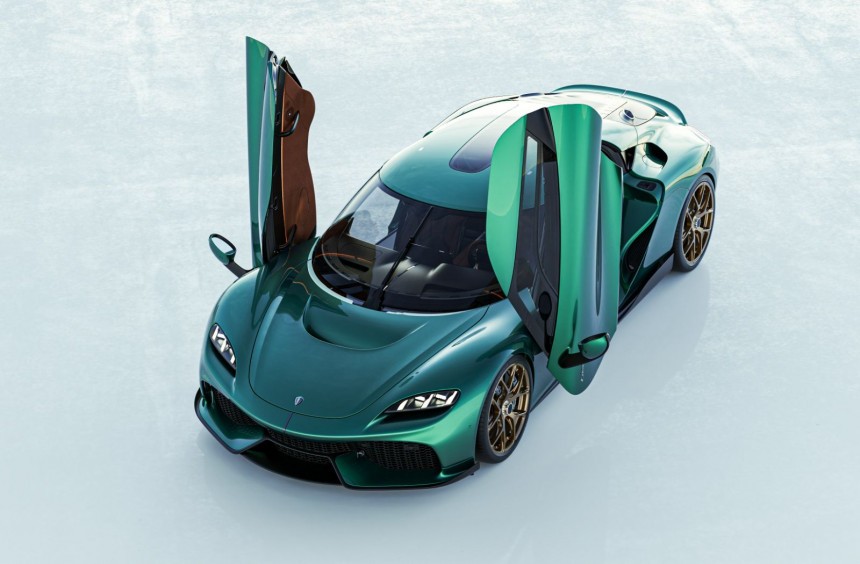Scissor doors were made famous by some of Lamborghini's most iconic models, but the Italian manufacturer isn't the only company that employed them on its production cars.
From the Countach to the latest Revuelto, all Lamborghini flagship models received scissor-opening doors, a feature that has become synonymous with the Italian brand, even among non-car people, earning them the nickname "Lambo doors."
Throughout the years, kits that transform conventional doors into scissors have been created and widely used by the tuning community, particularly during the 2000s and 2010s when doing so was a popular trend.
But, when it comes to production models, only some manufacturers outside Sant'Agata Bolognese opted for this feature.
The design has many disadvantages, ranging from reduced access, increased complexity and cost, or safety concerns, particularly in the event of a rollover.
Apart from Lamborghini, some carmakers found ways to solve or minimize the disadvantages just to add this feature to their models, so without further ado, here are five of the coolest, most famous non-Lambos with scissor doors.
One of the first non-Lambos to use this was America's long-forgotten supercar: the Vector W8.
Its story started in the 1970s when designer Jerry Wiegert decided to start his own company and build an aircraft-inspired supercar.
The initial mid-engine prototype, dubbed W2, was equipped with various cool features, including scissor doors. The project dragged on well into the 1980s, and a production version called W8 was not ready until 1990.
Assembled in California, the car donned a wedge-shaped carbon-kevlar body and hid a 625-hp race-bred Rodeck twin-turbo V8 behind the cockpit.
Though it was spectacular in more ways than one, the financial turmoil of the early 1990s limited its potential, so only 22 examples were built during a three-year run.
It's surprising how many young enthusiasts forget that the Veyron wasn't the first modern Bugatti.
A decade before the Volkswagen Group takeover that led to the record-breaking hypercar, the iconic French brand was purchased by Italian entrepreneur Romano Artioli, who temporarily moved it to Modena.
During its short-lived adventure on Italian soil, Bugatti produced a single model that, in a lot of ways, was as thrilling as its successor.
Yes, '90s kids, I'm talking about the one and only EB110.
Developed by former Lamborghini engineers and designed by an all-star team of Italian styling legends, the EB110 was one of the most epic supercars of the decade, and, of course, it featured scissor doors.
As spectacular as the humongous doors were, the mid-mounted V12 was the car's most epic feature. That's because, like its successor's W16, it featured a quad-turbo induction system.
Capable of up to 603 hp (in the Super Sport version, the engine was linked to a six-speed manual and powered all four wheels.
The EB110 was not just the first modern Bugatti to make it into production but also the first quad-turbo, all-wheel-drive supercar to do so.
However, the financial turmoil that limited the Vector W8's potential also impacted the life of the first and only Italian Bugatti. By 1995, the company declared bankruptcy, and the EB110 rode into the sunset with production totaling a little over 100 units.
Dauer completed some partially completed leftovers in Germany, while others were purchased by B Engineering, morphing into a supercar called Edonis - which continued the scissor door tradition.
The next mass-produced non-Lambo to feature scissor doors is one of the most impressive sports cars ever produced on Dutch soil.
Manufactured by Spyker Cars, the C8, which debuted in 2000, has nothing in common with the current Corvette apart from the mid-engine layout.
The first generation was designed by Maarten de Bruijn, who opted for the awe-inducing scissor door feature despite the disadvantages and complexity.
Despite the long list of modifications and improvements, second and third-generation styled by Simon Koop continued to retain the scissor doors.
Still in production today, the C8 uses an Audi-sourced supercharged V8 that makes up to 600 hp (depending on the trim). Throughout its lifespan, the car also used a twin-turbo V8 from Audi and a race-bred Mader-BMW V8 (for the Double 12S homologation special.)
Ferrari's flagship street cars used conventional doors for decades, but that changed once the Enzo Ferrari was unveiled in 2002.
Its butterfly doors were carried over to the succeeding LaFerrari, which was the most powerful road car ever built by the legendary company at the time of its release.
However, when Ferrari introduced the Aperta open-top version in 2016, the butterfly mechanism needed to be upgraded.
Though not the typical scissor door system, the new mechanism allowed the doors to swing up at an angle, which created more space than those on a Lambo.
That feature aside, the LaFerrari Aperta remains one of the rarest, most potent convertible Ferrari ever built.
Its powertrain incorporates a naturally aspirated V12 and an electric motor, which deliver up to 950 hp combined. Only 213 examples of this ultra-exclusive work of art were assembled during a two-year run.
For many, Sweden is synonymous with furniture, but for gearheads, the country is synonymous with breathtaking hypercars.
Arguably the greatest hypercar manufacturer on planet Earth, Koenigsegg is responsible for many innovations, including taking the concept of scissor doors to a whole new level.
Though the system designed and developed by Christian von Koenigsegg is officially called dihedral synchro-helix, it's based on the same idea of upward-opening doors.
However, unlike conventional scissor doors, Koenigsegg's use innovative hinges that minimize the height at which they open and make it easier to get in or out of the car.
The first production model to feature the system was the CC8S, but, in our opinion, the coolest is the Gemera.
Aside from the innovative door mechanism, the Gemera is the world's first grand tourer-style, four-seat hypercar.
Furthermore, the model can be ordered with a plug-in hybrid powertrain that includes either the Jesko's 5.0-liter twin-turbo HV8 or the standard Tiny Friendly Giant Engine, a revolutionary camless twin-turbo three-cylinder.
The engine can deliver 600 hp to the rear wheels and helps the Gemera achieve 1,400 hp when working with the Dark Matter electric motor that drives the front wheels.
Throughout the years, kits that transform conventional doors into scissors have been created and widely used by the tuning community, particularly during the 2000s and 2010s when doing so was a popular trend.
But, when it comes to production models, only some manufacturers outside Sant'Agata Bolognese opted for this feature.
The design has many disadvantages, ranging from reduced access, increased complexity and cost, or safety concerns, particularly in the event of a rollover.
Apart from Lamborghini, some carmakers found ways to solve or minimize the disadvantages just to add this feature to their models, so without further ado, here are five of the coolest, most famous non-Lambos with scissor doors.
Vector W8
Its story started in the 1970s when designer Jerry Wiegert decided to start his own company and build an aircraft-inspired supercar.
The initial mid-engine prototype, dubbed W2, was equipped with various cool features, including scissor doors. The project dragged on well into the 1980s, and a production version called W8 was not ready until 1990.
Assembled in California, the car donned a wedge-shaped carbon-kevlar body and hid a 625-hp race-bred Rodeck twin-turbo V8 behind the cockpit.
Though it was spectacular in more ways than one, the financial turmoil of the early 1990s limited its potential, so only 22 examples were built during a three-year run.
Bugatti EB110
A decade before the Volkswagen Group takeover that led to the record-breaking hypercar, the iconic French brand was purchased by Italian entrepreneur Romano Artioli, who temporarily moved it to Modena.
During its short-lived adventure on Italian soil, Bugatti produced a single model that, in a lot of ways, was as thrilling as its successor.
Yes, '90s kids, I'm talking about the one and only EB110.
Developed by former Lamborghini engineers and designed by an all-star team of Italian styling legends, the EB110 was one of the most epic supercars of the decade, and, of course, it featured scissor doors.
As spectacular as the humongous doors were, the mid-mounted V12 was the car's most epic feature. That's because, like its successor's W16, it featured a quad-turbo induction system.
Capable of up to 603 hp (in the Super Sport version, the engine was linked to a six-speed manual and powered all four wheels.
The EB110 was not just the first modern Bugatti to make it into production but also the first quad-turbo, all-wheel-drive supercar to do so.
However, the financial turmoil that limited the Vector W8's potential also impacted the life of the first and only Italian Bugatti. By 1995, the company declared bankruptcy, and the EB110 rode into the sunset with production totaling a little over 100 units.
Dauer completed some partially completed leftovers in Germany, while others were purchased by B Engineering, morphing into a supercar called Edonis - which continued the scissor door tradition.
Spyker C8
Manufactured by Spyker Cars, the C8, which debuted in 2000, has nothing in common with the current Corvette apart from the mid-engine layout.
The first generation was designed by Maarten de Bruijn, who opted for the awe-inducing scissor door feature despite the disadvantages and complexity.
Despite the long list of modifications and improvements, second and third-generation styled by Simon Koop continued to retain the scissor doors.
Still in production today, the C8 uses an Audi-sourced supercharged V8 that makes up to 600 hp (depending on the trim). Throughout its lifespan, the car also used a twin-turbo V8 from Audi and a race-bred Mader-BMW V8 (for the Double 12S homologation special.)
LaFerrari Aperta
Its butterfly doors were carried over to the succeeding LaFerrari, which was the most powerful road car ever built by the legendary company at the time of its release.
However, when Ferrari introduced the Aperta open-top version in 2016, the butterfly mechanism needed to be upgraded.
Though not the typical scissor door system, the new mechanism allowed the doors to swing up at an angle, which created more space than those on a Lambo.
That feature aside, the LaFerrari Aperta remains one of the rarest, most potent convertible Ferrari ever built.
Its powertrain incorporates a naturally aspirated V12 and an electric motor, which deliver up to 950 hp combined. Only 213 examples of this ultra-exclusive work of art were assembled during a two-year run.
Koenigsegg Gemera
Arguably the greatest hypercar manufacturer on planet Earth, Koenigsegg is responsible for many innovations, including taking the concept of scissor doors to a whole new level.
Though the system designed and developed by Christian von Koenigsegg is officially called dihedral synchro-helix, it's based on the same idea of upward-opening doors.
However, unlike conventional scissor doors, Koenigsegg's use innovative hinges that minimize the height at which they open and make it easier to get in or out of the car.
The first production model to feature the system was the CC8S, but, in our opinion, the coolest is the Gemera.
Aside from the innovative door mechanism, the Gemera is the world's first grand tourer-style, four-seat hypercar.
Furthermore, the model can be ordered with a plug-in hybrid powertrain that includes either the Jesko's 5.0-liter twin-turbo HV8 or the standard Tiny Friendly Giant Engine, a revolutionary camless twin-turbo three-cylinder.
The engine can deliver 600 hp to the rear wheels and helps the Gemera achieve 1,400 hp when working with the Dark Matter electric motor that drives the front wheels.
